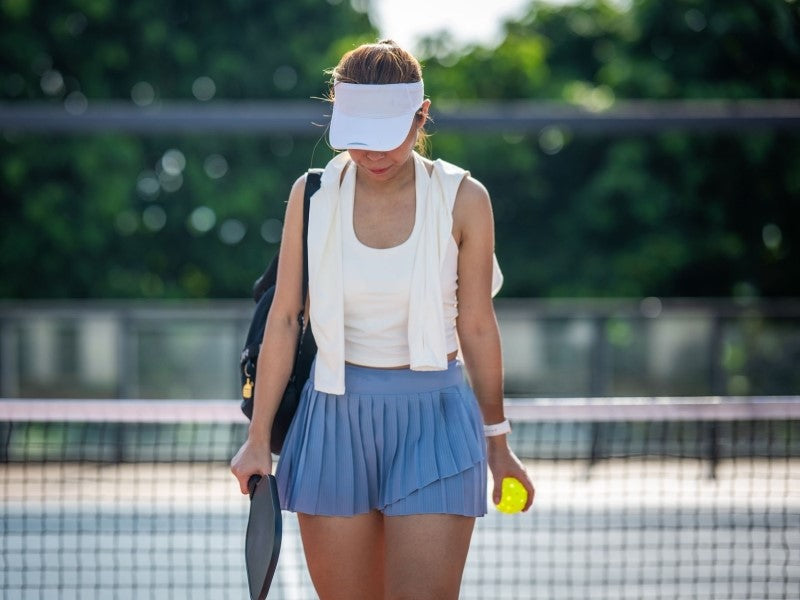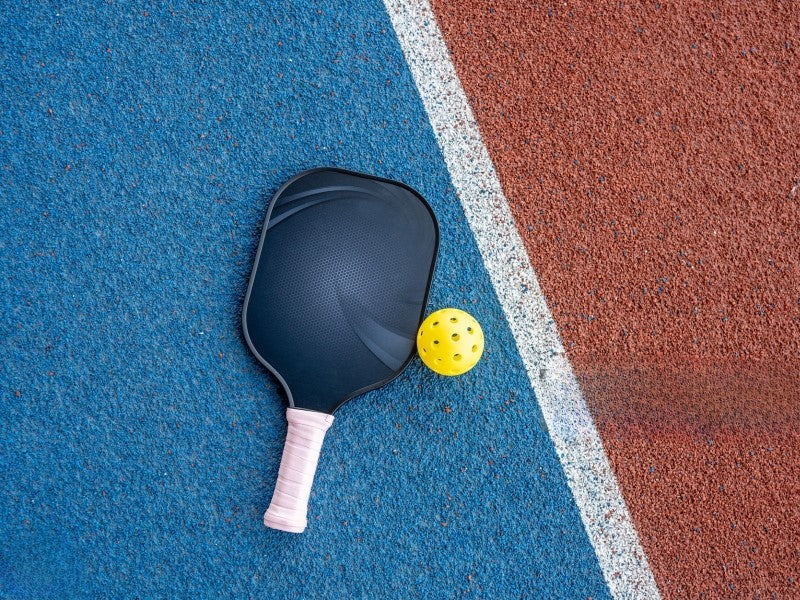Pickleball is a fast-paced and exciting sport that’s easy to start but hard to master. One of the first and most important gear decisions a player must make is choosing the right paddle. With so many options on the market, understanding the different types of pickleball paddles can give you a competitive edge and help you find the right fit for your style and skill level.
1. Wood Pickleball Paddles
Wooden paddles were the earliest pickleball paddles. They are the most affordable and widely available, making them popular among beginners, schools, and recreational centers.
Pros:
· Budget-friendly
· Extremely durable
· Ideal for casual or group play
Cons:
· Heaviest option (can cause fatigue)
· Minimal touch and control
· Does not include contemporary elements such as edge protectors or padded handles
Best For:
New players just trying the game, group settings, or budget-conscious buyers.

2. Composite Pickleball Paddles
Composite paddles feature a core crafted from materials such as polymer or aluminum, with a surface made of fiberglass or carbon fiber. They strike a balance between power and control.
Pros:
· Excellent all-around performance
· Available in various weights and textures
· Often have textured faces for better spin
Cons:
· More expensive than wood
· Performance can vary by brand and build
Best For:
Intermediate players, those seeking versatility, and individuals focused on spin and control.
3. Graphite Pickleball Paddles
Graphite paddles feature a core similar to composite paddles but are covered in a thin layer of graphite. They’re known for being lightweight and offering quick responses.
Pros:
· Lightweight for faster swings
· Excellent touch and ball control
· Preferred by competitive players
Cons:
· Can be expensive
· May lack power for some users
Best For:
Advanced players who value finesse, control, and a lighter feel.
4. Carbon Fiber Pickleball Paddles
Often confused with graphite paddles, carbon fiber paddles use a denser and stronger material. They provide an elite level of control and are increasingly used in professional play.
Pros:
· Superior touch and vibration control
· Long-lasting surface texture for spin
· Consistent shot feel across the face
Cons:
· Premium price point
· Slight learning curve due to soft feel
Best For:
Serious players looking for tournament-level gear and maximum control.
5. Hybrid Pickleball Paddles
Hybrid paddles combine elements of other types—for example, a graphite face with a composite core—to create balanced performance. Their goal is to provide players with the advantages of both aspects.
Pros:
· Customizable performance profiles
· Often designed with comfort grips and edge guards
· Good blend of power and control
Cons:
· Can vary widely in quality
· May not excel in one specific area
Best For:
Players who want well-rounded performance without committing to a single play style.

Key Factors to Consider When Choosing a Paddle
Selecting the right pickleball paddle is about more than just brand or price—it’s about finding the right combination of performance features that match your game. Here are the key factors every player should evaluate before making a purchase:
Paddle Weight
The weight of your paddle has a major influence on your play.
· Lightweight paddles (6.8–7.2 oz): Offer faster hand speed and better control at the net. Ideal for players who rely on quick reactions or want to minimize joint strain.
· Midweight paddles (7.3–8.4 oz): Offer a balanced combination of power and control. They are highly versatile and broadly suggested for intermediate players.
· Heavyweight paddles (8.5+ oz): Generate more power with less effort on drives but can lead to fatigue or elbow stress over time.
Core Material
A paddle’s core has an impact on both its tactile sensation and sound.
· Polymer cores are soft, quiet, and offer good control—great for beginners and doubles players.
· Nomex cores are stiffer and noisier, offering greater bounce and velocity—perfect for an aggressive playing style.
· Aluminum cores are lightweight and responsive but tend to dent more easily under heavy use.
Surface Material
The paddle face determines spin potential and shot feel.
· Graphite provides lightweight responsiveness and excellent control.
· Fiberglass tends to deliver more power and a bouncier feel.
· Carbon fiber offers a more compact, durable surface, with exceptional spin hold and precision.
Paddle Shape
Shape impacts how forgiving and versatile your paddle is.
· Standard paddles (approx. 15.5" x 7.75") are the most balanced.
· Elongated paddles offer extended reach but shrink the sweet spot.
· Widebody paddles feature a bigger sweet spot, making them perfect for beginners or players seeking greater forgiveness.
Grip Size
Comfortable grip size ensures better control and prevents fatigue.
· Small grips (4") allow for more wrist action and spin potential.
· Medium grips (4.25") are the most common and fit most hands.
· Large grips (4.5") offer stability and reduce wrist strain but may limit finesse.
Different paddle types suit different play styles. Here’s a simple guide:
|
Paddle Type |
Ideal For |
|
Wood |
Beginners, casual players |
|
Composite |
All-around performance |
|
Graphite |
Fast net play, control shots |
|
Carbon Fiber |
High-level control & touch |
|
Hybrid |
Balanced, adaptive players |
Maintenance and Longevity Tips
To get the most out of your paddle:
· Keep it dry and clean after each use
· Store indoors and away from extreme temperatures
· Use a paddle cover during transport
· Replace grip tape when it wears out
Most paddles last 1–3 years depending on use. Competitive players may replace theirs more often due to wear on surface texture.
FAQ: Types of Pickleball Paddles
Q1: What is the best type of paddle for beginners?
A composite or wood paddle is great for new players. Composite offers better balance; wood is ideal for budget-friendly starts.
Q2: How long does a pickleball paddle last?
Most last 1–3 years with regular play. Competitive players may need replacements more frequently.
Q3: Can I use a tennis racquet for pickleball?
No, pickleball requires specific paddles. Tennis racquets are too large and heavy for the game.
Q4: Is a heavier paddle better?
Not necessarily. Heavier paddles give more power but reduce control and can cause wrist fatigue.
Q5: What's the difference between graphite and carbon fiber paddles?
Carbon fiber is denser and offers more control and durability. Graphite is lighter and slightly more responsive.
Now that you understand the types of pickleball paddles and what each one offers, you’re better equipped to make a confident and informed choice—so you can focus on what really matters: enjoying the game!
Choosing the right pickleball paddle doesn’t have to be overwhelming. Start by understanding the five main types—wood, composite, graphite, carbon fiber, and hybrid—and then evaluate your needs based on your experience level, play style, and preferences.
The right paddle can enhance your performance, reduce fatigue, and make the game more enjoyable. As you grow in the sport, you may even find yourself switching paddles based on surface, opponents, or specific match demands. Try out a few options if you can, and remember—there’s no one-size-fits-all solution, just the right paddle for you.









Leave a comment
This site is protected by hCaptcha and the hCaptcha Privacy Policy and Terms of Service apply.